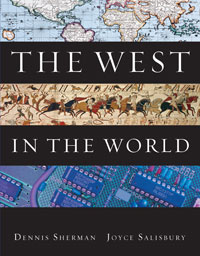1 A) the Maginot line B) the River Danube C) an iron curtain D) the U.S. Marshall Plan 2 A) Berlin. B) Cuba. C) Poland. D) Greece. 3 A) provided economic aid to Europe. B) stated that the U.S. would aid countries trying to resist communism. C) created a military alliance known as NATO. D) withdrew U.S. missiles from Turkey. 4 A) Soviet Union B) Vietnam C) China D) Japan 5 A) collectivized agriculture. B) empowered young radicals to rid the country of those not supporting Mao. C) set its population to building irrigation dams, steel mills, factories, railroads, schools, and hospitals. D) developed its first atomic weapon. 6 A) Vietnam. B) Laos. C) Korea. D) Afghanistan. 7 A) Cuba. B) Turkey. C) Mexico. D) Poland. 8 A) Poland B) Yugoslavia C) Czechoslovakia D) Hungary 9 A) East Germany B) Hungary C) Poland D) Bulgaria 10 A) health-care benefits. B) maternity benefits. C) lower taxes. D) childcare. 11 A) the Treaty of Rome. B) an agreement to manage coal and steel resources jointly. C) the Treaty of Paris. D) an agreement providing recovery aid to war-torn countries. 12 A) Indonesia. B) India. C) Vietnam. D) Egypt. 13 A) seized the Suez Canal. B) usurped political power in Egypt. C) sent forces to attack Israel. D) issued a new constitution and distributed land to peasants. 14 A) Morocco. B) Tunisia. C) Algeria. D) Nigeria. 15 A) Andy Warhol. B) Pablo Picasso. C) Arnold Schoenberg. D) Jackson Pollock. 16 A) a 1954 Supreme Court decision outlawing racial segregation. B) the refusal of Rosa Parks to move out of the white-only section. C) the assassination of Martin Luther King, Jr. D) a 1964 civil rights act. 17 A) lower prices for coal. B) the increased automation of industrial plants. C) higher unemployment. D) rising world oil prices. 18 A) "trickling down." B) encouraging private contributions to charities. C) forcing social services to operate more efficiently. D) being counterbalanced by lower defense spending. 19 A) less than 10% B) less than 20% C) less than 30% D) less than 40% 20 A) the discovery of the structure of DNA in 1953 B) the virtual eradication of smallpox by 1977 C) Neil Armstrong's walk on the moon in 1969 D) the development of the first computer in the 1940s 21 A) North Korea B) China C) North Vietnam D) Japan 22 A) The "Great Leap Forward" solved China's agricultural crisis. B) China remained a staunch Soviet ally throughout this period. C) Mao's "Cultural Revolution" inaugurated a new period of democratic liberalization. D) China attempted to completely transform its agricultural and industrial production.





